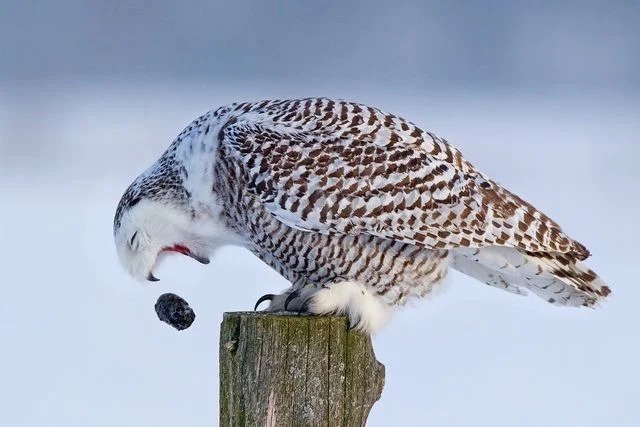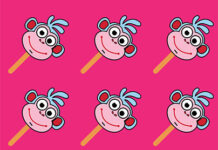Owl pellets are a mass of undigested material, such as bones and fur; an owl regurgitates that. Owls feed on small mammals and other animals, and their digestive system extracts nutrients from their prey efficiently. However, some materials, such as bones and fur, are not digestible and are compacted into a pellet and ejected from the owl’s body. Biologists and other scientists often study owl pellets to understand these birds’ diet and behavior.
A Barn Owl regurgitating an owl pellet below:
Keep reading the article to know more surprising facts:
What Are Owl pellets?
Before knowing about owl pellets let me tell you that Yes, owls do poop. Like all birds, owls have a digestive system that separates solid waste (feces) from liquid waste (urine). They excrete both types of waste through the same opening, called the cloaca, which is located at the base of the tail.
Owls tend to deposit their feces on the ground, although they may also defecate on flat surfaces or objects. The feces of owls can vary in color and consistency, depending on the type of food they have eaten.
NOW WHAT ARE OWL PELLETS?
An owl pellet is a mass of undigested material, such as bones and fur; an owl regurgitates that.
Owls are birds of prey that feed on small mammals and other animals, and they have a digestive system that is adapted to extract nutrients from their prey efficiently.
However, some materials, such as bones and fur, are not digestible and are compacted into a pellet and ejected from the owl’s body.
Biologists and other scientists often study owl pellets to understand these birds’ diet and behavior. They can also be used in educational settings to teach students about the biology and ecology of owls and other animals.
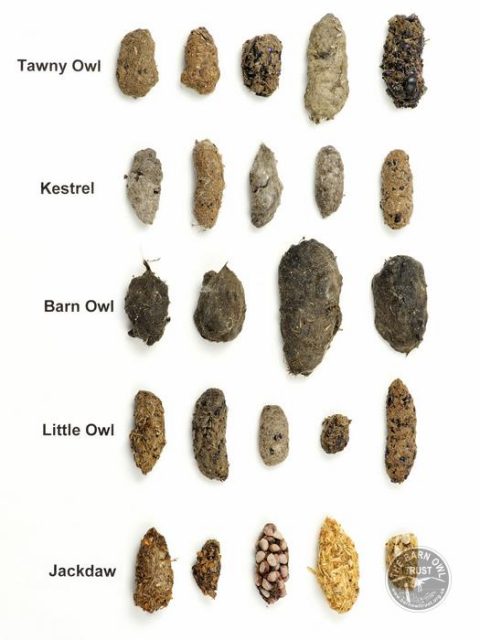
ALSO READ: Bat Poop – You Will Be Surprised to Know
Unknown Facts about Owl Pellets
- Owls and other types of birds, including birds of prey, crows, and sparrows, produce pellets made up of undigested parts of their food, such as bones and fur, which they regurgitate or bring up through their beaks.
- The appearance of an owl pellet can vary depending on what the owl has been eating. Owls produce pellets regularly, and examining them can provide insight into the diet of these birds.
- It is important to note that owl pellets are not the same as droppings and do not have an unpleasant smell.
- Fresh barn owl pellets are black but tend to turn grey as they dry out.
- Analyzing barn owl pellets can be a fun and educational activity, similar to being a scientist. To do this, gently pull the pellet apart to see what it is made of and record your findings in a notebook with drawings or photos.
- The ruler in the photo of a field vole skull is likely being used for measurement purposes, as bones can be identified based on their size and shape.
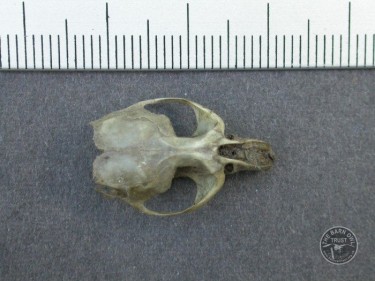
- In the UK, barn owls feed on small mammals such as voles, shrews, and mice, usually swallowed whole. As a result, barn owl pellets often contain several small mammals’ undigested fur and bones.
- It is common to find unusual remains in owl pellets, such as moles or frogs. Examining the skull and measuring the jaw bones makes it possible to identify what animal the bones came from.
In addition to small mammal remains, it is possible to find bird bones and bird rings in barn owl pellets. For example, a barn owl pellet from Essex contained a British Trust for Ornithology (BTO) ring fitted to a wren in Northumberland, a distance of approximately 300 miles.
This illustrates the wide range that some birds, and in this case barn owls, may travel in search of food. The discovery of such items in owl pellets can provide valuable insights into the behavior and movements of these birds.
ALSO CHECK: SURPRISING FACTS THAT WILL BLOW YOUR MIND
Where Can I Find Barn Owl Pellets?
Owl pellets often accumulate where owls roost or nest, such as in trees or buildings’ cavities. These sites provide shelter and protection from the weather for the owls.
When searching for evidence of barn owl activity, there are several signs to look for, including the appearance of the pellets. Fresh barn owl pellets are black in color, while dry pellets are dark grey.
By examining the appearance of the pellets and other indicators, it is possible to determine whether they are from barn owls or another type of bird.

Be mindful and respectful when collecting owl pellets from the wild, especially if you are searching for pellets from barn owls. These birds are protected by law, and it is illegal to disturb them while breeding.
However, if you are quietly collecting pellets discarded on the ground, it is unlikely that you will disturb the owls, as their nests are usually located high above the ground.
It is always best to be cautious, avoid disturbing wild animals, and follow local laws and regulations when collecting natural specimens.
How to Store Owl Pellets?
Owl pellets can be stored in many ways, including drying or freezing and keeping them in an airtight container. It is important to store pellets separately to prevent them from becoming a congealed mass of pellet debris.
When storing pellets in a sealed container, it is not uncommon to find small moths or grubs once the container is reopened. These are typically clothes moths and their grubs, which are harmless except for wool.
Barn Owl Pellet Analysis
To determine the age of barn owl pellets, you can use the barn owl pellet age guide chart shown in the photo. This chart can help you understand how long barn owls have been using a particular roost site and how recently they were present.
As barn owl pellets break down with age, the fur may be eaten by clothes moths, leaving behind the small bones, which can last for many years.
By examining the condition of the pellets, it is possible to estimate their age and gain insights into the activity of barn owls in a particular area.
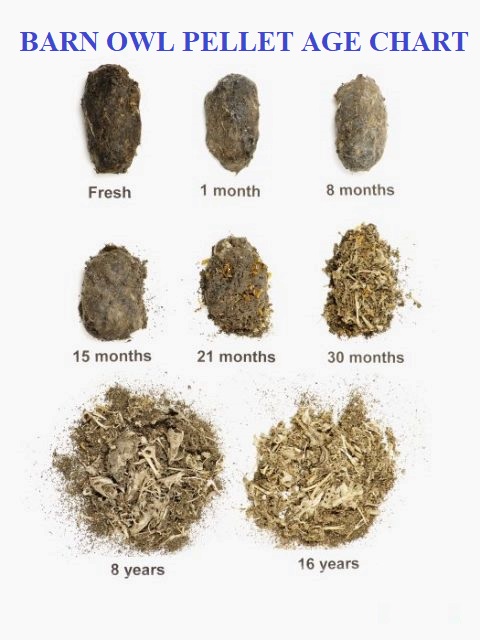
Barn Owl Pellet Dissection
You can use wet or dry pellets to analyze barn owl pellets. Analyzing dry pellets is generally easier, but you can soak the dried pellets in water for 24 hours to extract all of the small mammal bones intact.
To dissect a pellet, gently tease it with your fingers or tweezers. Although pellets do not have an unpleasant smell, washing your hands thoroughly with soap and water after this activity is still a good idea.
This will help to prevent the spread of any germs or bacteria that may be present on the pellets.
Barn Owl pellet Contents Identification
By analyzing many thousands of barn owl pellets, scientists have learned a great deal about the diet of these birds. Wild barn owls primarily feed on small mammals such as voles, shrews, and mice, although they may also consume other animals such as rats, birds, and frogs.
To identify which barn owl has eaten small mammals, you can search for the lower jaw bones and pair them with the corresponding left jaws from each pellet.
The shapes of the bones, particularly the jawbones, can provide clues about the animal species that the owl has eaten. You can also count the number of prey items within an individual pellet to get a sense of how much the owl has been eating.
What We can Find After Analyzing the Owl Pellet?
Examining owl pellets can provide information about the health of the owl that produced them.
By analyzing the bones and other remains contained in the pellets, scientists can get an idea of the owl’s diet and determine whether it is getting enough nutrients.
The size and condition of the bones can also reveal information about the overall health of the owl. For example, if the bones are small or malformed, it may suggest that the owl is not getting enough food or is experiencing some other health issue.
In addition, the presence of certain parasites or diseases in the remains found in the pellets can give clues about the owl’s overall health.
By examining owl pellets, scientists and other researchers can gain valuable insights into the health and behavior of these birds.
Conclusion
In conclusion, owl pellets are masses of undigested material, such as bones and fur, that owls regurgitate. Biologists and other scientists commonly use them to understand these birds’ diet and behavior. Owl pellets can be dried or frozen and stored in an airtight container, and they can be dissected to reveal the remains of the animals that the owl has eaten.
Examining owl pellets can provide valuable information about the health and behavior of these birds, and they are often used in educational settings to teach students about the biology and ecology of owls and other animals.

